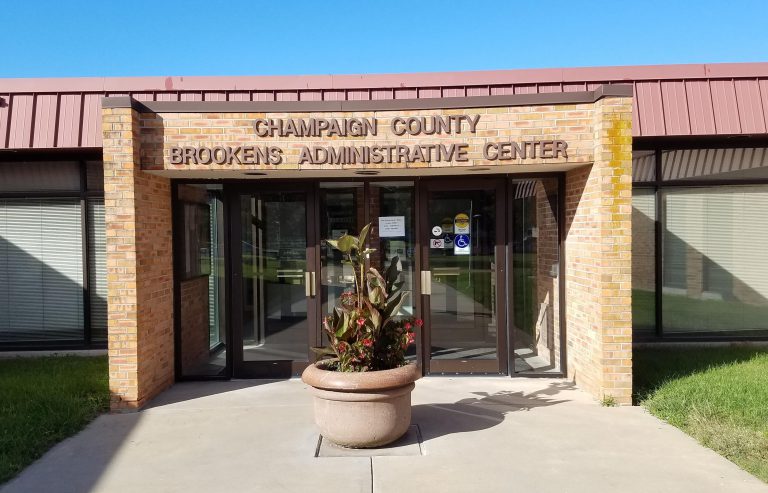URBANA – The Champaign County Board voted along party lines Friday evening to override the county executive’s veto of a new district map drawn by Democrats.
On a 14-7 vote (with Republican Jodi Wolken absent), the county board overrode County Executive Darlene Kloeppel’s veto of a map Democrats have labeled the Equity Map. Republicans had supported one of the three maps recommended by Kloeppel and worked out by her advisory committee.
The Champaign County Board had until the end of June to produce a new map outlining its eleven districts, each one represented by two county board members.
County Board Chairman Kyle Patterson said the Democrats’ Equity Map would improve county government by including two county board districts where people of color would be in the majority.
“With the ratio of people of color in this county, there’s no reason why there’s only one majority-minority district,” said Patterson, “and the executive chose not to put forward a map that had that.”
“It’s obvious that the Democrat party of Champaign County cares only about the power,” said Republican Caucus Leader Jim Goss of Mahomet, “because they’ve chosen to keep the public out of the loop on this remap process.”
Goss and other Republicans argued that the Democrats’ map would hurt representation for rural areas. They criticized Democrats for voting to pass the new district map at the same meeting as a public hearing on the matter. They had further criticism for the scheduling of the veto override meeting on a Friday night going into the Memorial Day holiday weekend, when many people would be unable to attend.
The inconvenient scheduling was the apparent reason that many public comments at Friday’s county board meeting came in the form of letters and emails sent to Republican county board members who read them aloud. (Only two public comments at the meeting, held on Zoom, were delivered by the people who wrote them).
Those opposing the override included Champaign County Republican Chairman Dee Shonkwiler (a Savoy village trustee) and St. Joseph Village President Tami Fruhling-Voges.
Republican county board member Brad Passalacqua of Tolono Township said the letters and emails were just part of what he had heard against the Democrats’ actions.
“I’ve got multiple telephone calls and personal conversations with people that have compared what is going on in Champaign County to what they see in Cook County,” said Passalacqua. “And none of them want Champaign to become Little Chicago.”
Left unspoken at the Friday night meeting is what the new district map will mean for the fortunes of the two major political parties in Champaign County. Voters in the county’s rural areas tend to vote Republican. In an earlier interview, Goss said the Democrats’ map would make it easier for them to win a 15th seat on the 22-member county board, giving them another vote to alter the county budget without needing buy-in from Republicans.
“Once they get one more county board seat, then they can basically spend the money however they want to spend it,” said Goss, in an interview conducted earlier in May.
Patterson, in a May 24th interview, conceded that Democrats may gain an additional county board seat under the Equity Map.
“Yeah, that’s certainly a possibility,” said Patterson. “But that’s just how the geographic and political makeup of the county is. What they (the Republicans) are suggesting is that we gerrymander a district that basically borrows half of its voters from Champaign-Urbana, and that includes a large rural population.”
Harrison argues that the Equity Map reduces instances where a district combines different types of areas, such as rural or urban. Such combinations can be used to dilute the power of one political party or another.
But the Equity Map outlines three county board districts that are primarily rural (which would be expected to tilt Republican), instead of the four included in the map supported by Kloeppel and the Republicans, as well as the old map based on the 2010 Census.
And none of the new county board district maps are based on the new 2020 Census at all. Final Census figures have been delayed, and all of the proposed new county board district maps are based on survey data, such as the Census Bureau’s American Community Survey.
County Executive Kloeppel, in vetoing the Equity Map, argued that population variances between districts could be subject to legal challenges once Census figures finally arrive. But Patterson said that survey data used for the Equity Map, while different, was just as valid as data used for the map recommended by Kloeppel and her advisory panel, and no more likely than hers to be challenged.
The Champaign County Board’s vote on Friday to override the county executive’s veto and pass new county board maps came on the same day that state legislators in Springfield voted to approve new maps for legislative and Illinois Supreme Court districts.

